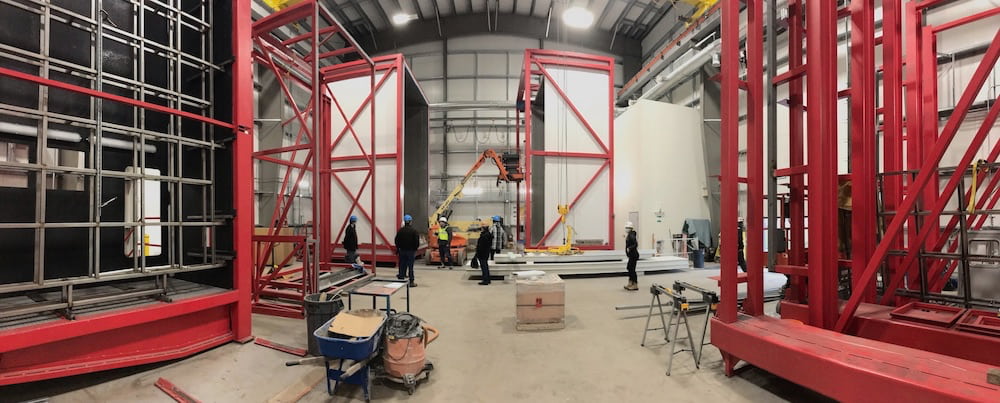Imagine your home is losing a substantial amount of heat through an exterior wall. The traditional fix might be opening the wall and adding insulation, but this can be a costly, time consuming and disruptive repair.
Thanks to research underway by a multidisciplinary team at Carleton University, there may be faster, cheaper and more effective ways of addressing this issue in the future. For instance, a company could manufacture a new custom-sized exterior wall offsite and attach it to the existing structure. Optimal materials would be chosen to ensure the resiliency of the building envelope for years to come, maximizing energy efficiency while minimizing repair costs and inconvenience to the occupants.
This is just one example of the sustainability-focused research being conducted at the newly opened Centre for Advanced Building Envelope Research (CABER) in Ottawa, under the supervision of Cynthia Cruickshank at Carleton University.
CABER is the latest addition to Carleton’s Building Performance Research Centre boasting 10 investigators and 60 graduate students. CABER researchers will collaborate with government and industry partners to test innovative materials and design strategies for completing retrofits and building new homes in ways that prioritize energy conservation and affordability. Many of the students will be part of Carleton’s inaugural cohort of the Building Engineering graduate program launching in September 2022, the only program of its kind in Ontario.

Given that energy use in residential and commercial buildings accounts for 22 per cent of greenhouse gas emissions (GHGs) in Canada and nearly two-thirds of energy is used for space heating, conserving energy to reduce GHGs is a key priority of the team’s research, alongside addressing challenges such as housing shortages and affordable construction.
“Lots of people are on waiting lists for housing,” explains Cruickshank. “Coming up with solutions for quick and affordable retrofits is one way to keep those lists from getting longer by keeping people in their homes during the renovations.”
Alongside the shortage of housing is a shortage of construction labour in Canada. Automated and robotic construction have the potential to help alleviate this shortage while making housing more affordable, according to CABER investigator Liam O’Brien.
“If we build tens or hundreds of homes in a factory, we don’t have all the wasted materials of on-site construction,” says O’Brien. “There is less damage as well because the partially-built homes will be protected from the elements during construction.”
The CABER team will use data-driven, machine-learning based methods to assess the energy performance of homes and gather information from thermographic imaging using drones, laser scans, or photogrammetry to identify priority areas for retrofits based on building envelope weaknesses.
“There is a huge gap in expertise in building performance,” says O’Brien. “It’s an emerging field somewhere between mechanical and civil engineering and architecture. Students in our programs are being hired before even graduating.”
Developing a deep understanding of optimal building performance is of particular importance as the realities of climate change become more apparent. CABER researchers will use computer modelling to apply future extreme weather scenarios to a wide range of building materials and use that information to develop design strategies that ensure houses stay comfortable for longer periods of time, after power outages and other failures.
The CABER facility is equipped to test materials in climate-simulated conditions, ranging from -40°C to 40°C to replicate the scope of the Canadian climate and the potential impacts of climate change on these materials over time.
“We are hoping to influence building codes through our research,” explains Cruickshank. “The federal government is very eager to support the development of more high-performance and resilient buildings.”
CABER is one of the research facilities that can be visited during Doors Open Ottawa on June 4 at the NRCan CanmetENERGY complex in Bells Corners. For more information on CABER, visit carleton.ca/caber.


